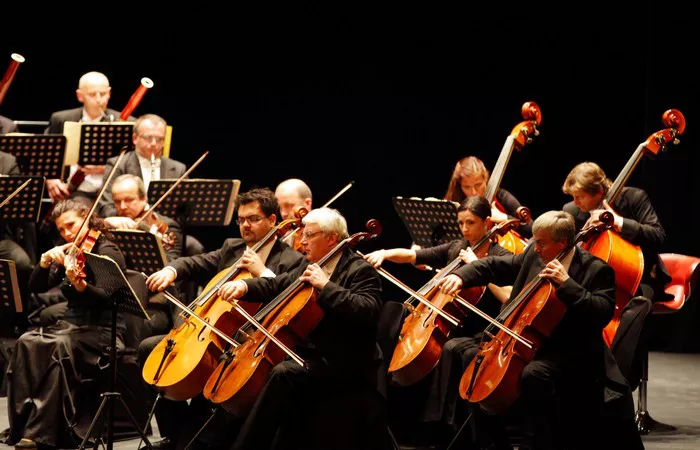Wolfgang Amadeus Mozart is one of the most celebrated composers in classical music history. Among his extensive repertoire, the “Rondo alla Turca,” also known as the “Turkish March,” stands out as one of his most popular and recognizable pieces. This movement, from his Piano Sonata No. 11 in A major, K. 331, showcases Mozart’s genius in blending traditional European classical elements with influences from Turkish music, creating a captivating and lively composition that continues to enchant audiences worldwide.
Mozart and His Era
The Classical Period: Mozart’s life spanned the latter half of the 18th century, a period known as the Classical era in Western music. This era was characterized by a move away from the complexity of Baroque music towards clarity, balance, and form. Composers like Mozart, Joseph Haydn, and Ludwig van Beethoven focused on creating music that was expressive yet structured, adhering to established forms such as the sonata, symphony, and string quartet.
Cultural Influences: The Classical period was also a time of significant cultural exchange. European fascination with the Ottoman Empire, known as “Turquerie,” influenced many aspects of art, architecture, and music. This fascination is evident in the “Rondo alla Turca,” where Mozart incorporates elements that imitate the Janissary bands, the military music of the Ottoman Turks. These bands were known for their distinctive use of percussion and wind instruments, which Western composers sought to emulate.
The Structure of Piano Sonata No. 11
The Sonata Form: Mozart’s Piano Sonata No. 11 in A major, K. 331, composed around 1783, is a fine example of his skill in the sonata form. Unlike the typical sonata structure, which starts with an allegro movement, this sonata begins with a theme and variations. The second movement is a minuet and trio, followed by the lively and famous “Rondo alla Turca.”
The Rondo Form: The rondo form is characterized by a recurring theme that alternates with contrasting episodes. In the “Rondo alla Turca,” the main theme is vibrant and march-like, imitating the sounds of Turkish military music. This theme reappears multiple times throughout the movement, interspersed with contrasting sections that provide variation and interest.
Musical Analysis of “Rondo alla Turca”
Main Theme: The main theme of the “Rondo alla Turca” is in A minor and is marked by its lively tempo and rhythmic drive. It begins with a distinctive, percussive melody that mimics the sound of Turkish percussion instruments such as the cymbals and bass drum. The use of staccato notes and accents contributes to the piece’s energetic and playful character.
Contrasting Episodes: The contrasting episodes in the rondo provide a respite from the main theme’s intensity. These sections often modulate to different keys and showcase Mozart’s lyrical and expressive writing. The episodes are typically more legato and feature more elaborate melodic lines, offering a contrast to the rhythmic vigor of the main theme.
Harmonic Structure: Harmonically, the “Rondo alla Turca” is relatively straightforward, adhering to Classical conventions. However, Mozart’s use of unexpected modulations and chromaticism adds interest and complexity. The piece’s harmonic language is accessible yet sophisticated, making it appealing to both performers and audiences.
Performance Practice
Interpretation: Interpreting the “Rondo alla Turca” requires a balance between technical precision and expressive flair. Pianists must navigate the piece’s fast tempo and intricate passages while conveying its playful and spirited character. Attention to articulation and dynamics is crucial to bringing out the piece’s distinctive Turkish flavor.
Technical Challenges: The “Rondo alla Turca” presents several technical challenges for pianists. The fast tempo and staccato passages demand agility and control. Additionally, the contrasting episodes require a smooth and lyrical touch, necessitating a wide range of pianistic skills. Mastering these challenges is essential for a successful performance of the piece.
Historical Context and Reception
Initial Reception: When Mozart composed the “Rondo alla Turca,” Europe was captivated by the exoticism of the Ottoman Empire. This fascination extended to music, where composers incorporated “Turkish” elements into their works. The “Rondo alla Turca” was well-received, appreciated for its novelty and lively character.
Legacy and Popularity: Over the centuries, the “Rondo alla Turca” has remained one of Mozart’s most beloved pieces. Its catchy melody and rhythmic energy have made it a favorite among pianists and audiences alike. The piece’s enduring popularity is a testament to Mozart’s genius in creating music that is both technically impressive and emotionally engaging.
Influence and Adaptations
Influence on Other Composers: The success of the “Rondo alla Turca” influenced other composers to explore similar themes in their works. Composers such as Beethoven and Schubert incorporated elements of Turkish music into their compositions, contributing to the broader trend of “Turquerie” in Western music.
Modern Adaptations: In modern times, the “Rondo alla Turca” has been adapted in various ways, from orchestral arrangements to adaptations for different instruments. Its catchy melody and rhythmic drive make it a versatile piece that lends itself well to reinterpretation. These adaptations help keep the piece relevant and accessible to new audiences.
See Also: 10 Best Composers of the 21st Century [2024]
Conclusion
Wolfgang Amadeus Mozart’s “Rondo alla Turca” is a masterpiece that exemplifies his ability to blend different cultural influences into his music. Its lively and energetic character, combined with its technical brilliance, make it a standout piece in the classical piano repertoire. The “Rondo alla Turca” not only highlights Mozart’s compositional genius but also reflects the cultural exchanges of his time, providing a fascinating glimpse into the musical landscape of the Classical period. As one of his most famous works, the “Rondo alla Turca” continues to captivate and inspire musicians and listeners alike, securing its place in the annals of classical music history.

